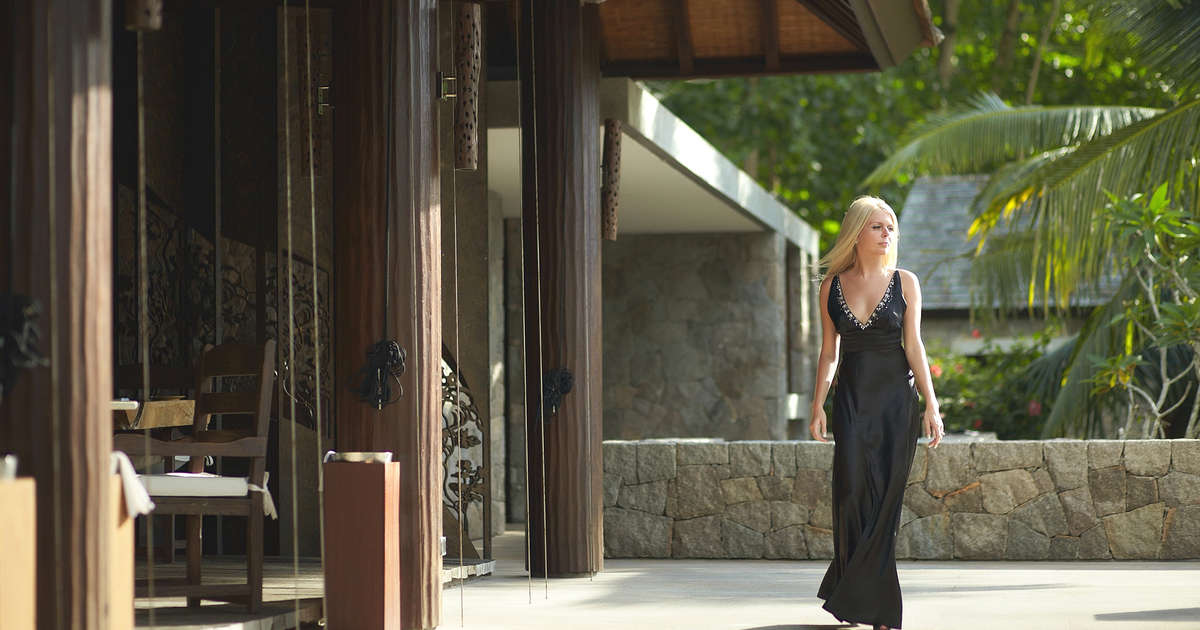
Over the last five years, the wellness economy has seen tremendous growth with no signs of slowing. It continues to reshape industries, prompting companies to prioritize holistic health and meaningful experiences while embracing sustainability as a foundation for long-term well-being – a shift that resonates with today’s travelers.
In hospitality, wellness has moved beyond spas and fitness centers to be a defining factor in a property’s appeal. Guests increasingly choose destinations that support their physical and mental well-being, returning to those that deliver on this promise. By designing outdoor spaces that are purpose-built for health and relaxation, hotels will yield powerful opportunities to not only meet these expectations but turn wellness into a key driver of long-term growth.
With thoughtful updates, existing outdoor spaces can be reimagined to enhance guest well-being in meaningful, tangible ways. Here are three practical strategies hospitality leaders can apply using the assets their properties already have.
1. Reimagine Arrival and Transitional Spaces
First impressions are paramount, particularly in wellness travel. The arrival sequence – whether a driveway, porte cochere, or courtyard – is more than a transition from car to lobby. It is an opportunity to immediately convey calm and signal a shift from the external environment into a restorative setting.
Arrival zones can be designed as multi-sensory thresholds that gently guide the guest’s movement while promoting wellness. Layered planting, textural paving, and natural materials such as stone, wood, or woven fibers provide tactile and visual cues of warmth and comfort while aromatic plantings support a psychological shift that eases the mind. Even modest enhancements to spatial organization, such as curved pathways, shaded alcoves, or framed sightlines, creates anticipation and intentional pause, encouraging guests to transition mentally as well as physically.
When designed with cultural and ecological authenticity, these spaces become even more impactful. Utilizing native materials or culturally resonant forms creates sequences that are rooted in place and reflective of the destination’s identity while supporting environmental stewardship. By designing intentional arrival and transitional spaces, hotels can transform the arrival journey into a calming, restorative experience that sets the tone for the entire stay.
2. Make Nature the Keystone, Not the Accessory
Many hotels have outdoor areas or gardens, but few truly integrate nature into the guest experience. Today’s traveler seeks direct contact with the natural world – places that invite rest, relaxation, and a genuine connection.
Hotels can respond by designing multi-sensory, biophilic environments that extend beyond visual greenery to engage the senses for a more tactile experience. From a landscape architecture standpoint, this might include strategically placed water features for acoustic relief, aromatic plantings to stimulate olfactory response, and natural materials that invite hands-on exploration. By deliberately orchestrating sensory elements, hotels can craft emotionally resonant environments that restore cognitive function and improve overall guest well-being.
Geographic location also informs the types of nature-inspired experiences hotels can and should create. In urban settings, rooftop gardens, vertical plantings, and inner courtyards provide a calming green refuge from the city’s busy pace. For oceanfront or lakeside hotels, designated quiet zones along the water’s edge leverage natural vistas and prevailing breezes to support mental restoration. These spaces are often designed as tech-free retreats, using nature-inspired materials and spatial sequencing to facilitate mediation and relaxation.
Climatic synergy further enhances comfort. Considering orientation, shading, airflow, and microclimate management can make outdoor areas naturally comfortable without reliance on artificial cooling. This passive approach not only enhances wellness but also reduces operational demands and simultaneously promotes ecological wellness.
3. Create Outdoor Spaces for Purposeful Movement
As travelers seek wellness experiences that extend beyond the ordinary, hoteliers have an opportunity to uplevel their outdoor spaces into purposeful journeys. Curated pedestrian routes can lead guests to scenic viewpoints, hidden yoga decks, or walkable sequences with mindful moments for pause.
Several areas throughout hotels can also transition into multi-purpose platforms for wellness, such as lawns, poolside decks, or shaded groves. With proper surfacing, lighting, and spatial arrangement, these spaces can accommodate workout classes in the morning, tai chi at noon, and sound baths or stargazing at night. Even small design additions, such as reflexology paths, barefoot sensory trails, or quiet sitting stones, encourage physical and mental engagement with nature.
In addition, hotels welcoming families or multi-generational groups may also benefit from amenities that accommodate varying ages and needs. Think outdoor play zones with an emphasis on exploration, movement gardens that balance activity with relaxation, and communal fire pits or outdoor cooking areas where all ages can gather. Thoughtful layout and programming ensure these spaces can coexist within the same footprint and foster connections whether experienced individually or together.
When restorative programs connect seamlessly with the broader property wellness ceases to be an isolated amenity and becomes an integral part of the guest journey. With spa gardens that flow seamlessly into private villas, meditation paths that align with stormwater channels, or edible landscapes connecting to on-site culinary programming, wellness must support the guest journey at every phase and stage.
Wellness is no longer an optional luxury – it is central to the guest experience and a strategic driver for hospitality growth. By reimagining arrival sequences, placing nature at the heart of design, and creating outdoor spaces that support intentional movement, hotels can craft environments that nurture mind, body, and spirit. In doing so, they not only meet the evolving expectations of travelers but establish a lasting, meaningful connection to place, setting a new standard for hospitality in the wellness era.
Scott LaMont
Chief Executive Officer of EDSA
EDSA
Please visit:
Our Sponsor
